6. Barton Fink
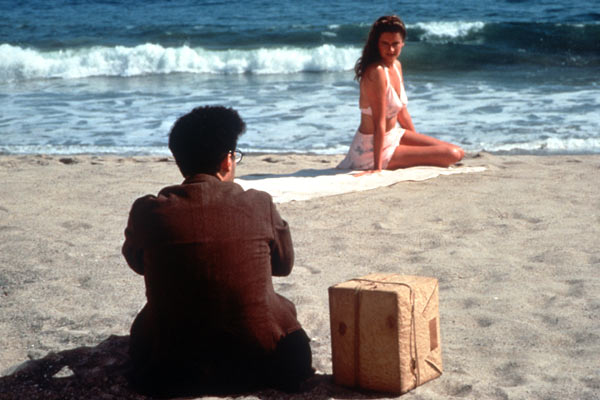
For a writer, there’s nothing worse than suffering from writer’s block. And if your career is writing, it can be a disaster. This is what playwright Barton Fink (John Turturro) finds out when he’s plucked from New York City to write a feature film in 1941 Hollywood. Pretentious and self-serving, Fink is at odds with an assignment that calls for him to quickly pen a script for a wrestling B-movie.
But he finds this task surprisingly difficult and ends up driven to distraction by insurance salesman Charlie Meadows (John Goodman), a garrulous man who’s rooming next door to him in the decrepit hotel he’s staying at. Fink also gets involved with writer Audrey (Judy Davis) but disturbingly finds her dead next to him after spending the night together. From there, the film ramps up to a delirious climax that any further details would spoil it.
One of the Coen Brothers earliest efforts to mix dark humor with their off-the-wall zaniness, Barton Fink is especially notable for John Turturro’s performance as the neurotic, self-aggrandizing Fink and Goodman’s turn as the hulking, unstoppable force that is Charlie Meadows.
Playing off of popular perceptions of the glamour of Hollywood, the Coens instead depict the more salacious and unflattering aspects of living and working in show business: from uninspiring writing gigs to drunk and unhappy writers to low-rent hotels, they purposely detail La La Land a place most assuredly not populated by beautiful people or where dreams are made.
A dark, funny, and nearly unclassifiable film that seems to mean several things at once, Barton Fink is another masterpiece from two of America’s most unique filmmakers.
5. Fargo

Desperate car salesman Jerry Lundegaard (William H. Macy) needs money to cover his embezzlement so he hires two unhinged thugs to kidnap his wife to demand a ransom from her wealthy father. Meanwhile, heavily pregnant police officer Marge (Frances McDormand) investigates the kidnapping and begins to puzzle the mystery together.
Set in the vast winterscape of the Upper Midwestern US, this black comedy crime thriller that affectionately parodies the casual friendliness of the denizens of this region is punctuated by scenes of explosive violence and suspense.
A success both critically and commercially, Fargo’s enduring popularity lead to the production of a TV series of the same name nearly twenty years after its release. Frances McDormand won the Academy Award for Best Actress as the purposely naive-seeming Marge, and the all-around dynamic performances of the actors involved succeed at pulling off the tricky balancing act of a film that wildly swings from comedy to drama.
An iconic film (wood chippers and Upper Midwest accents found a lot of notoriety in pop culture after this) and possibly the Coen Brothers’ greatest success in genre-mixing, Fargo is both solemn and way more entertaining to watch than it should be.
4. O Brother, Where Art Thou?
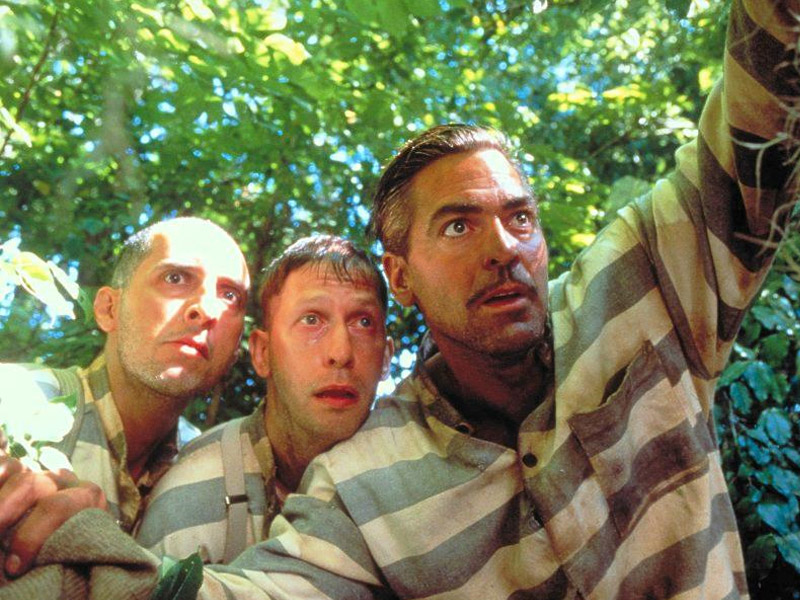
The Coen Brothers love depicting periods in American history and using the historical social and cultural aspects of those eras to inform characters and subvert expectations.
In O Brother, Where Art Thou? the Coens depict Depression-era Deep South as a mythical rural landscape in which tempting sirens, one-eyed giants, and blind prophets roam. One of their most crowd-pleasing films, O Brother is supported by one of the best soundtracks ever put together, brimming with country, blues, bluegrass, and gospel classics.
The story loosely follows (or rather, is inspired by) Homer’s The Odyssey, with three escaped convicts–smooth-talking Ulysses (George Clooney), simple-minded Delmar (Tim Blake Nelson) and bumpkin Pete (John Turturro)–navigating the many pitfalls and obstacles between themselves and a buried treasure Ulysses promises he is leading them toward.
Along the way, they befriend a guitar player who sold his soul to the devil, record a hit song, get chased by both the law and the KKK, and encounter many other colorful characters–all while Ulysses tries to win back his wife.
A beautiful film with fantastic cinematography and a populist spirit, O Brother, Where Art Thou? finds the Coen Brothers delving into magical realism and humming a catchy tune in this musical comedy. Perhaps their most accessible film, it’s as unexpected as anything else they’d ever produced before–and as usual when it comes to the Coens’ work, it’s a pleasant surprise.
3. Raising Arizona
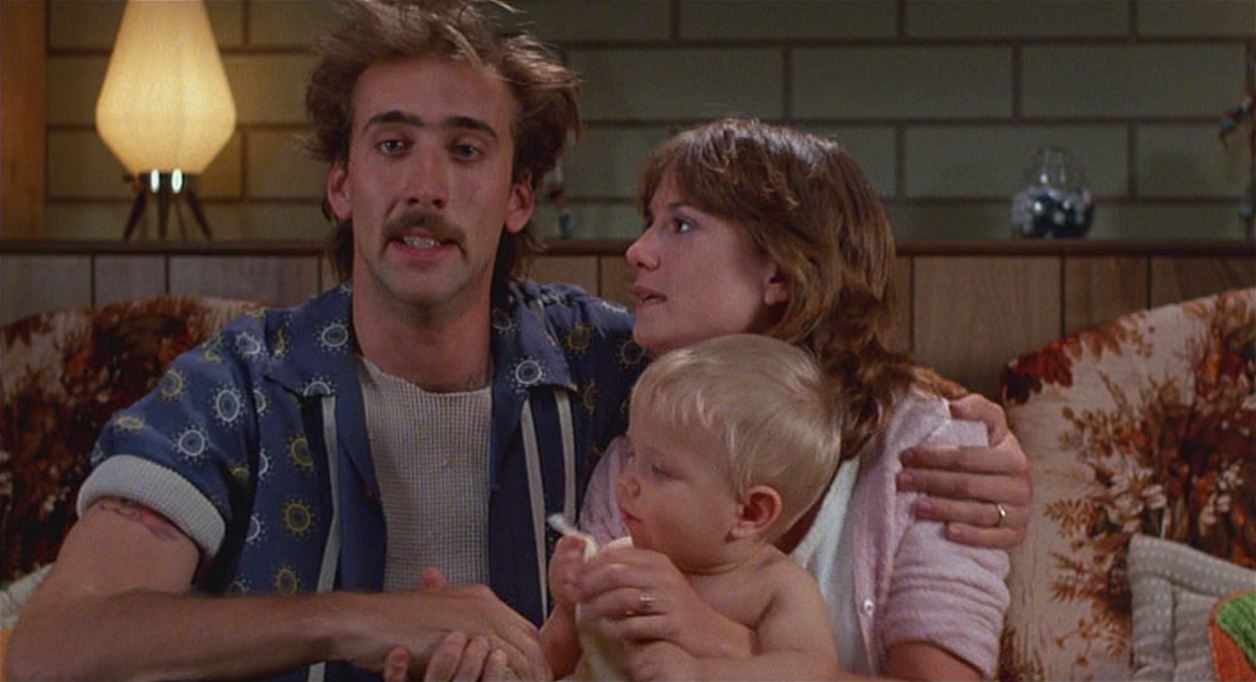
From the opening montage set to fast-paced guitar picking that provides all the exposition the viewer will need to understand these characters, this film’s world, and the cinematic grammar that’s going to be used to elucidate the story, Raising Arizona’s chief concern is to entertain the hell out of its audience–and it succeeds on every level.
After petty criminal H.I. “Hi” McDunnough (Nicolas Cage) and his police officer wife Edwina “Ed” (Holly Hunter) find that she’s infertile, they hatch a plan to kidnap one of the newborn quintuplets of local furniture magnate Nathan Arizona. While they initially succeed, Hi receives an unexpected visit from former cellmates Gale (John Goodman) and Evelle, who have just escaped from prison; they soon suss out the baby’s actual parentage and take the infant for themselves.
Meanwhile, a demonic bounty hunter also begins to hunt for the baby, intending to sell it on the black market. This wild comedy is all shot with a stylish high-energy and visual creativity that makes Arizona out to be on another planet completely and populated by similarly strange creatures.
Although not mentioned yet, director Barry Sonnenfeld was the cinematographer for the Coen Brothers’ first three films, and his flashy style is fully on display here. A sophisticated sophomore effort from the Coens, Raising Arizona is a lot of fun to watch while also sneaking in moments of pathos and surrealism to temper the hyperkinetic tone of the film.
Cage, Hunter, and Goodman all give stellar performances, with Cage standing out as both the star and narrator of this sideways tale. A sort of film school in itself, a cinephile will both appreciate and learn something about filmmaking just by watching this movie.
2. No Country For Old Men
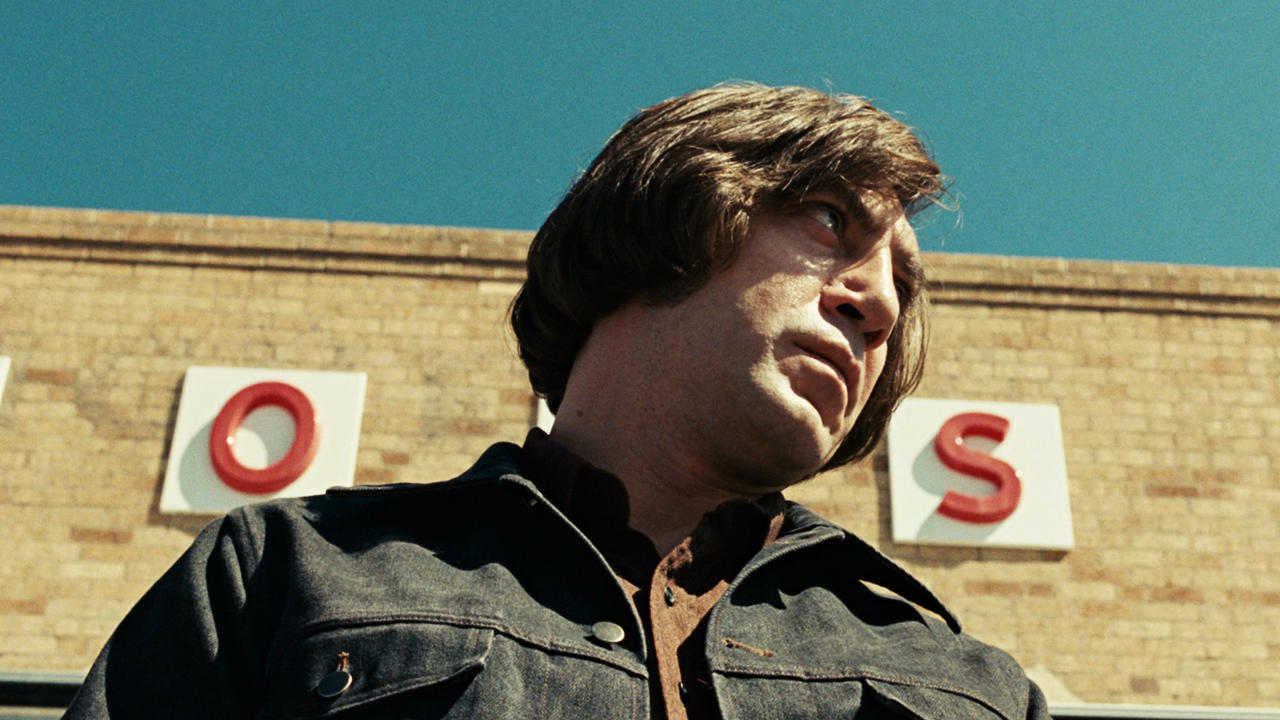
Is there any figure more nightmare-inducing than the relentless, towering hitman Anton Chigurh, the black-hearted villain in No Country For Old Men? As he stalks his prey and the briefcase full of money he’s after, Chigurh mercilessly leaves a trail of bodies in his path, while his preferred weapon for execution is a high-pressured bolt gun. Seemingly unfazed even when shot and needlessly thorough in his work, Chigurh is the kind of evil that other bad guys fear.
No Country For Old Men is perhaps the Coen Brothers’ most sophisticated work: a masterpiece that details the cat-and-mouse game that starts when veteran Llewelyn Moss (Josh Brolin) comes across a bloody drug deal gone wrong in the deserts of Texas. Finding all but one of the participants dead, Moss takes a money-filled briefcase from the scene.
But this act immediately makes him the target of Chigurh (play to terrifying perfection by Javier Bardem), an amoral psychotic that destroys anything that gets between him and the briefcase.
Somewhere in the middle here is the story of Sheriff Ed Bell (Tommy Lee Jones), who’s also seeking the briefcase and Moss, hoping to save him before Chigurh finds him first. Bell waxes nostalgic about how times have changed and the world has gotten more violent, becoming increasingly disillusioned as his investigation uncovers the wanton destruction left in Chigurh’s wake.
A philosophical film shot and edited with a clarity of focus and purpose perhaps never seen before in the Coens’ work, the film’s stark minimalism perfectly replicates the tone and style of its source material, writer Cormac McCarthy’s eponymous novel.
Touching on grand themes like nihilism, destiny vs. self-determination, and relative moralism and creating a hybrid genre picture (Western, crime thriller, action, mystery, and even comedy), the Coen Brothers created a lasting masterpiece and one of the finest films ever made.
1. The Big Lebowski
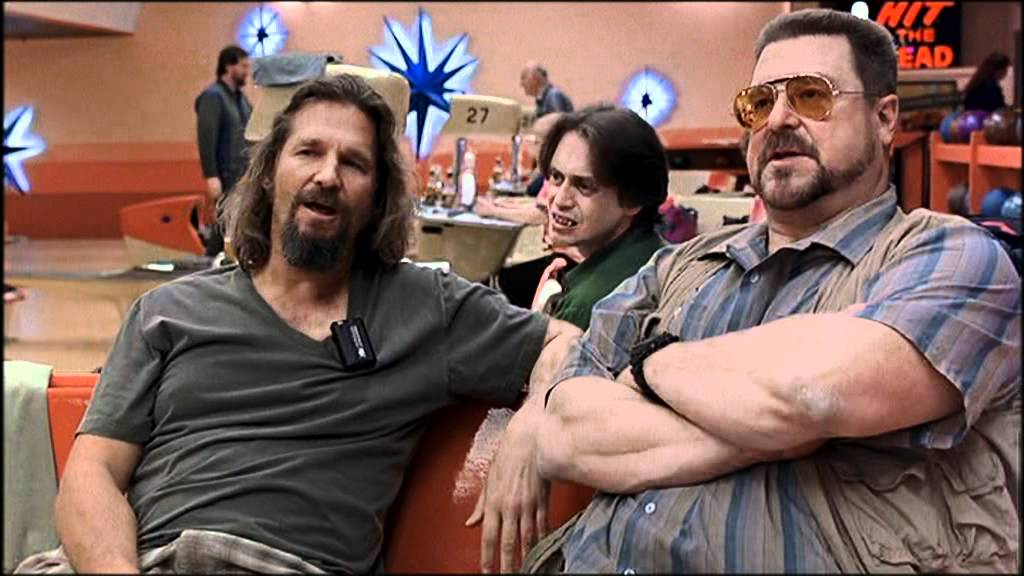
While No Country For Old Men beats this one in terms of impact and overall greatness when compared to the history of cinema, The Big Lebowski is perhaps the best Coen Brothers film. If this list leaned heavier towards their dramas, than No Country would easily get top spot–but the Coens do comedy so well, and often succeed at it more regularly than they do with drama, that The Dude gets top billing this time around.
Detailing the shaggy dog detective story of one Jeffrey “The Dude” Lebowski (played effortlessly by Jeff Bridges), an unemployed stoner living in 1991 Los Angeles, and how he gets mixed up in a kidnapping and ransom scheme after a case of mistaken identity leads two nihilists to break into his apartment one evening, rough him up, and piss on his rug (which really tied the room together), The Dude seeks out one Jeffrey Lebowski, a wealthy philanthropist for which he was mistaken.
Lebowski approaches The Dude to make the ransom hand-off to reclaim his kidnapped trophy wife Bunny, but when The Dude’s friend Walter (John Goodman)–a militant veteran on his bowling team–bungles the handoff, and when Lebowski’s spacey artist daughter (Julianne Moore) reaches out to The Dude suggesting the whole thing’s a scam, The Dude begins to investigate further, falling into more misadventure and strange situations as the case unravels.
The results are very silly–and very entertaining. It is such an infectiously fun and visually engaging film that a loyal cult following has developed around the film and the character The Dude himself. And it’s easy to see why: The Dude is mostly unfazed, preferring white Russians and a joint than engaging with the world around him.
In fact, most of the fun is watching as this aging hippie that wants nothing more than to bowl and listen to his Bob Dylan and Creedence Clearwater cassettes is dragged out of his pot-addled idle and forced to deal with a situation that previously had nothing to do with him.
The cinematography is wonderfully dreamlike, viewing LA as a surreal place, one that turns places as mundane as a bowling alley (which is featured in a memorable opening credits sequence) or a dumpy apartment into semi-magical arenas. It’s a kinetic, colorful movie filled with fantastic characters, great set pieces, and a story that tumbles along like a tumbling tumbleweed.
It’s a film you can watch when you want to turn off your brain and let a movie do all of the work. Building a universe where seemingly anything can happen at any moment, and directed with style and boundless creativity, the Coen Brothers created their personal best with The Big Lebowski.
While it opened to mixed reviews and only attained fair box office returns, since then it’s become a modern comedy classic. Whether or not has a point seems largely irrelevant: that it’s their most entertaining film is what matters.
Author Bio: Mike Gray is a writer and academic from the Jersey Shore. His works have been featured on Cracked and Funny or Die, and he maintains a film and TV blog at mikegraymikegray.wordpress.com.